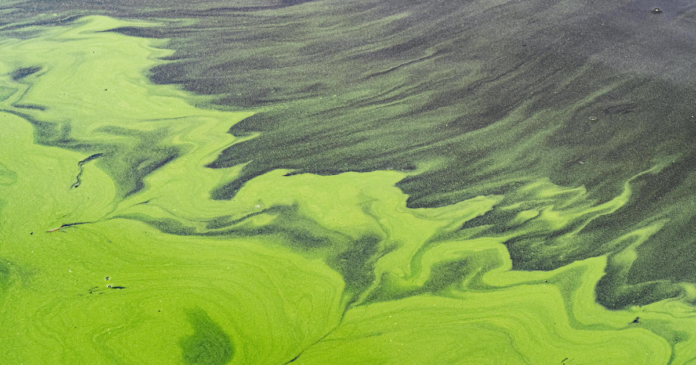There’s now another kind of water hazard to be on the lookout for – toxic algae. The Centers for Disease Control and Prevention have issued a report finding hundreds of harmful algal blooms across the U.S. sickened people and killed animals — a problem that is likely to get worse.
Harmful algal blooms, otherwise identified as HABs, stem from the “rapid growth of algae or cyanobacteria” in water. Some of the algae in these blooms produce toxins that can cause illnesses in both humans and animals, impacting health primarily through water exposure, but also through the air.
Here’s what to know.
Where are the harmful algal blooms?
Analyzing data from 2021, the CDC found 368 of these blooms across 16 states that year – Arizona, California, Illinois, Kansas, Michigan, Minnesota, North Carolina, Ohio, Oregon, Pennsylvania, Tennessee, Utah, Virginia, Washington, Wisconsin and Wyoming. Michigan and Pennsylvania had the most algal blooms – 77 each – while Utah had the most human illnesses.
Washington had the most animal illnesses, as the toxic algae was linked to the deaths of more than 2,000 bats. California had the second-most animal cases, with 444 animals affected.
The problem became worse during the summer months with the blooms peaking in August. In 2021, 248 of the blooms had no associated illnesses, while 48 were known to cause human illness, 79 caused animal illness and seven caused illnesses for both groups.
More than half of the blooms, however, were filled with toxins.
Most were in freshwater sources, such as lakes and reservoirs. In those, a “green water color” was frequently reported, the CDC said, although there were reports of illness when the water was clear.
Unlike red tide events, which have long plagued Florida’s waters, these blooms involve algae or cyanobacteria, which is also referred to as blue-green algae. Red tide, on the other hand, is formed by the bacteria Karenia brevis, which can make the water appear red or brown.
How do harmful algal blooms affect humans?
The CDC found that 117 people became ill after coming into contact with harmful blooms in 2021, about half of them children and teens. Just under three-quarters of those who became ill sought medical care, but there were no deaths.
Most of the human illnesses related to the blooms occurred in June, the CDC found, and primarily in public outdoor areas and beaches.
The most common symptoms people reported were gastrointestinal issues – mostly diarrhea, nausea, vomiting and abdominal pain – headaches, fatigue, fever, rashes, itchy and irritated skin, sore throat and coughing.
How do harmful algal blooms affect animals?
Animals were far more impacted by the harmful blooms in 2021 than humans, according to the CDC. At least 2,715 animals became sick from the blooms, with at least 92% dying from their exposure. Wildlife was overwhelmingly affected, although dogs and cattle were also among those affected. Most of the deaths occurred in Washington, where at least 2,000 bats died.
The problem for animals was at its worst in August, when the blooms were at their peak.
For pets, the most common symptoms of HAB-related illness were loss of appetite, lethargy, muscle tremors, weakness, vomiting and imbalance, although several other symptoms were reported. Among wildlife, the most common symptom of illness was dark urine.
Toxic algal blooms could get worse
The CDC said in its report that harmful algal bloom events “can be intensified by factors such as nutrient pollution and warmer water temperature” – both of which are expected to increase with climate change.
As regional and global temperatures warm, so will the temperatures in freshwater systems, Indiana University’s Environmental Resilience Institute says.
“Warmer water temperatures in deep lakes slows down processes that add oxygen to the water, creating dead zones, or areas with less oxygen that are unable to support life,” according to the institute. “These dead zones can produce large-scale fish mortality and toxic algal blooms.”
Nutrient pollution is also expected to increase, as climate change spurs more extreme weather that can lead to more stormwater runoff. That runoff “can result in conditions favorable for algal blooms,” the university says.
“Consequently, with a changing climate, harmful algal blooms can occur more often, in more fresh or marine waterbodies and can be more intense,” they said, adding that it could also end up affecting drinking water, as freshwater sources will need more treatment than usual.




